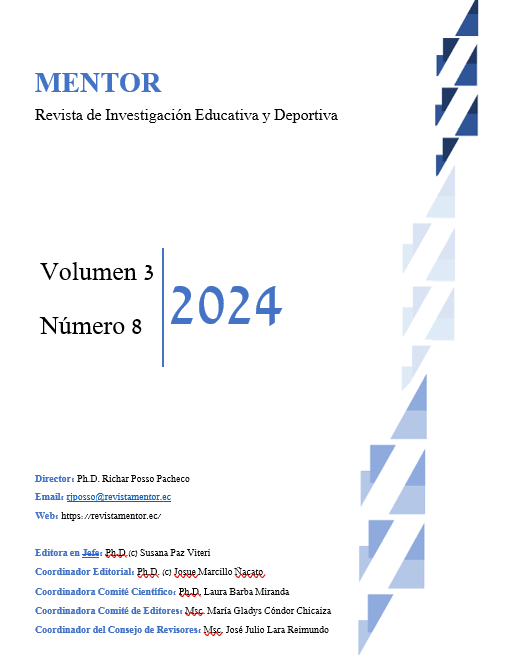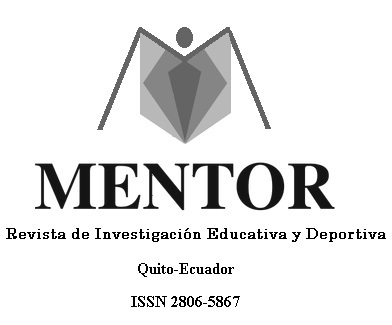Effects of variable practice on the learning of free throw in basketball
DOI:
https://doi.org/10.56200/mried.v3i8.7910Keywords:
Interdisciplinary projects., STEAM, innovation, creativityAbstract
In the following research, the effectiveness of the STEAM methodology applied in the educational process is studied through interdisciplinary projects in Basic General Education, where it is demonstrated that the learning of interdisciplinary projects can be improved by applying the STEAM methodology, where students develop their creativity. cognitive skills and critical thinking. The importance of updating teachers in these methodologies is highlighted to implement practical and innovative practices in the classroom in order to promote active, dynamic and creative learning for all students. The STEAM methodology is characterized by the integration of multidisciplinary content from different areas such as Mathematics, Sciences, arts, technology and engineering, where they can be related to the knowledge of teachers to create interdisciplinary projects where the creativity and leadership of students is promoted. students. The methodology used for the analysis of results was carried out using the SPSS program where the chi square and factor analysis of this research were evaluated, where it was possible to verify that said methodology does help the teacher to improve the planning of interdisciplinary projects, reducing hours. planning and maximizing teaching help in all areas of basic general education.Downloads
References
Amaya, J (2020). Aprende como evaluar las competencias STEAM. https://blog.pearsonlatam.com/en-el-aula/como-evaluar-las-competencias-stem
Ariza, C. Troncel, L. y Blanchar, J. (2018). El rendimiento académico: una problemática compleja. Bol.redipe. 7(7),137-41. https://revista.redipe.org/index.php/1/article/view/527
Rodríguez, Y. (2023). El modelo STEAM y la creatividad en estudiantes del primer año de la escuela general básica “mercedes Amelia Guerrero", durante el año lectivo 2021-2022. (Tesis). Universidad Nacional del Chimborazo. https://n9.cl/m2zjq
Sánchez Ludeña, E. (2019). La educación STEAM y la cultura «maker». Journal of Parents and Teachers, (379), 45–51. https://doi.org/10.14422/pym.i379.y2019.008
Santillán-Aguirre, J., Jaramillo-Moyano, E., Santos-Poveda, R., & Cadena-Vaca, V. (2020). STEAM como metodología activa de aprendizaje en la educación superior. Polo del Conocimiento, 5(8), 467-492. https://doi.org/10.23857/pc.v5i8.1599
Published
How to Cite
Issue
Section
License
Copyright (c) 2024 MENTOR revista de investigación educativa deportiva

This work is licensed under a Creative Commons Attribution-NonCommercial-NoDerivatives 4.0 International License.











